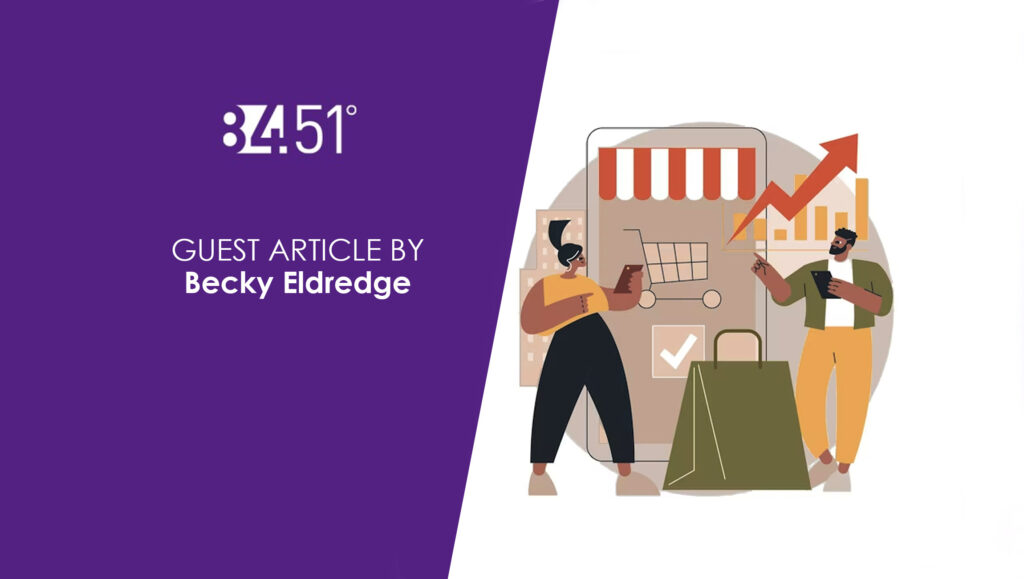As today’s inflationary environment continues to affect shoppers’ budgets and mindsets, it’s also changing the consumer buying decision process — but not necessarily in the ways you might think.
Budget constraints and economic uncertainty make pricing an influential factor in the purchasing decision stage. But while shoppers are motivated by price, it isn’t the only factor that can boost their loyalty. Brand trust and value have also become key players in the loyalty game. As a result, brands need to look beyond pricing and promotion and work to build trust and value to find and keep their best customers.
Read More: SalesTechStar Interview with Dan Green, Chief Revenue Officer at Semcasting
Decision differentiators
When budgets are tight, a variety of factors come together to influence the purchasing decision for shoppers. While pricing is certainly one of them, recent research from 84.51° shows that trust and value are vital differentiators that can give brands a competitive loyalty edge.
When asked about the factors that most heavily inform their grocery and household item purchasing decisions, respondents placed getting a “good value” for their money at the top of the list, with 62% naming it as a priority. The second most important quality to these respondents was trust; 34% said they choose brands they can trust. Other factors named a priority by respondents include that a brand “delivers on its promise(s)” (11%) and “cares about me” (4%).
Shoppers are also looking for retailers that they can trust to help them stretch their budget with quality grocery and household items. Factors named by respondents as most important when deciding where to shop include offering high-quality fresh foods (25%), having a good assortment of products (21%), and having a rewards program that provides shopper value (20%).
It’s important to note that the prioritization of these factors can vary among different age groups — especially as it relates to inflation. For example, shoppers 65 and older are most concerned that a brand is a good value for the money, but brands must deliver on their promise to be in the consideration set for shoppers ages 55-64, and for Millennials free items are a top loyalty driver for that generation. These shifting priorities offer brands unique opportunities to reach these different groups in meaningful ways
Driving loyalty
Trust and brand value are also intertwined; if trust in a brand is high, the brand’s perceived value rises. But the opposite is also true — brands with zero trust have zero value to shoppers. So, if trust and brand value go hand in hand for driving loyalty, how can brands make sure they’re building those elements into their products?
One key strategy is to closely monitor customer satisfaction. By utilizing product performance claims testing or product usage testing, brands can ensure product performance is meeting shopper expectations.
Brands should also consider investing in loyalty programs that provide value to shoppers with relevant brand offerings and savings on their preferred brands. Always-on communication highlighting relevant benefits and value to shoppers can optimize these programs to encourage more loyalty.
Acknowledge and thank shoppers for their loyalty through personalized brand offers. The relevancy that this delivers to shoppers will build both brand and retailer connections and long-term loyalty.
Simplify decisions
Brands can also build and maintain trust in their brand value by helping shoppers to make easy, informed decisions. To help shoppers feel good about their purchases, analyze their motivations, attitudes and preferences to identify the key product features that matter to them.
Sharing more information about your brands — from corporate priorities and initiatives to sourcing and innovation — also builds trust by helping shoppers make more educated decisions about the products they use. And offering personalized recommendations eases the complexity of wading through a multitude of varieties, sizes and flavors so shoppers don’t have to struggle to make choices.
Adapt to changes
Shopper behavior and attitudes will continue to shift over time so it’s imperative that brands and retailers adapt to those changes too. Relentlessly evaluate shifting shopping behaviors to anticipate shopper needs and stay ahead of the market. Identify new ways to deliver more value through historical insights and forward-looking shopper research. Evaluate your competitors’ strengths to uncover new value and potential patterns that shoppers are responding to. Companies that seize these opportunities will earn loyalty of both new and existing shoppers.
While we don’t know how long this inflationary and uncertain economic environment will last, brand trust and value will likely continue to influence purchase decisions significantly. As shoppers look for brands they can trust to help them stretch their budget with quality products, meeting those expectations will enable brands to build relationships that will last among new and existing shoppers alike.
















